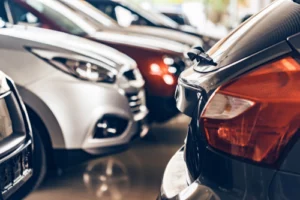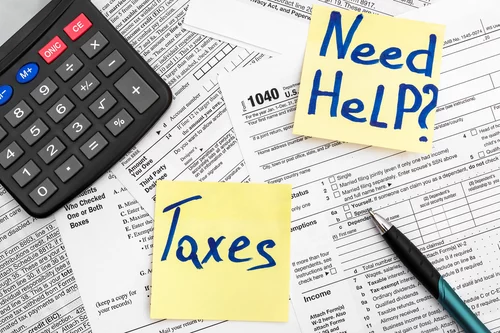- Posted on
- Kortney Murray
- 0
We all groan as soon as tax season comes around. But with Section 179, we can help reduce the tax burden for our small businesses. In this article, we will discuss what Section 179 is and provide you with a Section 179 deduction vehicle list to see if you qualify.

What is Section 179?
To recap our previous blog post, Section 179 of the US IRS Tax Code is an immediate expense deduction created by Congress to stimulate US economic growth. It does this by incentivizing and rewarding businesses that purchase business equipment.
The deduction is made on depreciable business equipment to reduce tax liability on the business’s income taxes. This enables them to take an immediate tax deduction instead of capitalizing an asset and depreciating it over time in future tax years. The Section 179 deduction can be taken if the equipment is purchased or financed.
The purchase price must also be eligible for the deduction. For 2022, there is a maximum deduction of $1,080,000, and the total value of the property purchased limit is set to $2,700,000. Let’s be specific. The words business “equipment” could relate to:
- Vehicles that are used for the business
- Business software and computers
- Machinery like dump trucks, excavators, and light towers
- Office furniture
- Office equipment
- Property attached to the building that is a structural component (printing press, etc.)
- Some improvements made to the building like HVAC, roofing, security systems, etc.
This deduction is targeted at small and medium-sized business use since the companies that qualify for it are those that spend less than $2.7 million a year on approved equipment purchases. Are you a self-employed worker, freelancer, or independent contractor?
You may be able to use Section 179 to claim tax deductions for your driving expenses. To be clear, this is only available for car owners who use their cars at least 50% for business purposes. This is not to be confused with deductions for mileage and car expenses. Section 179 goes a step further by deducting vehicle purchases.
Section 179 For Vehicles
So now that we’re more familiar with Section 179, let’s break down the ins and outs of this tax deduction for vehicles. The vehicles qualifying for the deduction are broken into three groups. The deduction is different for each group and can change year-to-year. Here are the three main groups and their deduction limits:
Light/Small
Small vehicles with a gross vehicle weight rating (GVWR) under 6,000 pounds are considered to be in the light category. This could include passenger cars, crossovers, and small utility trucks. Those eligible light vehicles are allowed a deduction limit of $10,200 the first year of purchase. That would also come out to $18,200 with bonus depreciation.
If you do not use your vehicle 100% for business purposes, you would reduce the percentage to the amount you do use it when on the job. So if you were an Uber driver, and you only used your car 50% for work, then you would multiply that with the deduction limit ($10,100 x .50 = $5,050). Your limit would then be $5,050.
Heavy
To qualify for the “Heavy” category, your vehicle should have a GVWR between 6,000 pounds and 14,000 pounds. This will include most SUVs, vans, and pickup trucks. The deduction limit is $27,000 for 2022. But what if your vehicle costs more than this?
Let’s take an example of a vehicle purchased for $47,000. If you used your vehicle 100% for business, you will deduct the $27,000 through Section 179 and then get a first year-depreciation of $10,000. This is figured by dividing the remaining purchase price after the Section 179 deduction which was $20,000.
Check with your tax professional to see if a regular depreciation percentage applies in your case. Remember that these deductions limits can change yearly.
Other
To qualify for the “Other” category, your vehicle must have a GVWR over 14,000 pounds (7 tons) or a vehicle modified for nonpersonal use. This could include:
- Shuttle vehicles with more than 9 passengers behind the driver’s seat
- Delivery vans or cargo vans with a cargo area of at least six feet long in the interior that is not easily accessible from the passenger area
- Vehicles with a fully enclosed driver compartment and load-carrying device
- Vehicles with no seating behind the driver
- Vehicles that have no part of the body extending more than 30 inches beyond the windshield
- Specialty single-use vehicles like ambulances, work trucks, and hearses
- Heavy construction equipment like forklifts, tow trucks.
- Typical “over-the-road” tractor trailers
For all of the vehicles that fall under the “Other” category, there is no Section 179 tax deduction limitation. This means you can deduct 100% of the vehicle cost.

What Vehicles are Eligible for Section 179?
Generally speaking, Section 179 tax deductions can apply to passenger vehicles, SUVs, trucks, and vans that are used at least 50% of the time as work vehicles. But let’s talk specifics. As we’ve said, Heavy vehicles between 6,000 and 14,000 pounds qualify for a $25,000 Section 179 deduction limit. But which vehicles fall within this category?
Here is a list of vehicles that are eligible:
- Audi
- AUDI Q7 3.0L TDI
- BMW
- BMW X5 M
- BMW X5 XDRIVE35I
- BMW X6 M
- BMW X6 XDRIVE35I
- Buick
- BUICK ENCLAVE 2WD
- BUICK ENCLAVE 4WD
- Cadillac
- CADILLAC ESCALADE 2WD
- CADILLAC ESCALADE AWD
- CADILLAC ESCALADE HYBRID
- CADILLAC XT5
- CADILLAC XT6
- Chevrolet
- SILVERADO C1500
- SILVERADO C1500
- SILVERADO C2500
- SILVERADO C3500
- SILVERADO K1500
- SILVERADO K1500
- SILVERADO K2500
- SILVERADO K3500
- SUBURBAN C1500
- SUBURBAN K1500
- TAHOE 2WD LS
- TAHOE 4WD LS
- TAHOE HYBRID
- TRAVERSE 2WD
- TRAVERSE 4WD
- Chrysler
- Pacifica
- Pacifica Hybrid
- Dodge
- DODGE DURANGO 2WD
- DODGE DURANGO 4WD
- DODGE GRAND CARAVAN
- Ford
- FORD EXPEDITION 2WD
- FORD EXPEDITION 4WD
- FORD EXPLORER 2WD
- FORD EXPLORER 4WD
- FORD F-150 and larger 2WD
- FORD F-150 and larger 4WD
- FORD FLEX AWD
- GMC
- GMC ACADIA 2WD
- GMC ACADIA 4WD
- GMC SIERRA C1500
- GMC SIERRA C2500 HD
- GMC SIERRA C3500 HD
- GMC SIERRA C3500 HD
- GMC SIERRA K1500
- GMC SIERRA K2500 HD
- GMC SIERRA K3500 HD
- GMC YUKON 2WD
- GMC YUKON 4WD
- GMC YUKON HYBRID
- GMC YUKON XL C1500
- GMC YUKON XL K1500
- Honda
- PILOT 4WD
- HONDA ODYSSEY
- Infiniti
- INFINITI QX80
- INFINITI QX56
- Jeep
- JEEP GRAND CHEROKEE
- Land Rover
- RANGE ROVER 4WD
- RANGE ROVER SPT
- DISCOVERY
- Lexus
- LEXUS GX460
- LEXUS LX570
- Lincoln
- LINCOLN MKT AWD
- LINCOLN Navigator
- Mercedes Benz
- MERCEDES-BENZ G550
- MERCEDES-BENZ G Class
- MERCEDES-BENZ GL350 BLUETEC
- MERCEDES-BENZ Metris & Sprinter
- Nissan
- NISSAN ARMADA 2WD
- NISSAN ARMADA 4WD
- NISSAN NV 1500 S V6
- NISSAN NVP 3500 S V6
- NISSAN TITAN 2WD S
- Porsche
- PORSCHE CAYENNE
- Ram
- RAM Promaster 1500-3500
- RAM 1500 and up
- Tesla
- TESLA MODEL X
- Toyota
- TOYOTA 4RUNNER 2WD LTD
- TOYOTA 4RUNNER 4WD LTD
- TOYOTA LANDCRUISER
- TOYOTA SEQUOIA 2WD LTD
- TOYOTA SEQUOIA 4WD LTD
- TOYOTA TUNDRA 2WD
- TOYOTA TUNDRA 4WD
- Volkswagen
- VW TOUAREG HYBRID
If your vehicle was not on the list, it might be considered a “Light” vehicle. This would mean potentially you would qualify for a smaller deduction limit of $10,100. Be sure to double-check your GVWR to figure out which category your vehicle falls under.
2022 changes
Depending on the year, the deduction limit can change. Make sure to look up the deduction limits pertaining to your tax filing year. Some changes were made for the 2022 tax year, including:
- Section 179 2022 deduction limit changed to $1,080,000
- Equipment purchases spending cap changed to $2,700,000
- Bonus depreciation changed to 100% for 2022
Other Limitations and Rules to Think About
If you are considering purchasing a vehicle for your small business, it is important to make sure you fully understand Section 179 and its rules. Not all purchases will qualify. So let’s take a closer look at some of the limitations and rules of this tax deduction.
Bonus Depreciation
As we mentioned, bonus depreciation can also be used as a tax benefit for your vehicle. Many people confuse bonus depreciation and the Section 179 tax deduction. The two can sometimes be used together but they are not the same thing. So what’s the difference?
Well, bonus depreciation lets you deduct a percentage of the cost of certain assets and property that you’ve bought. Section 179, on the other hand, allows you to deduct a particular amount from new business assets you’ve bought. Another difference is that bonus depreciation can be used whether or not your business is profitable.
To benefit from Section 179 tax deductions, your company must make a profit. As we’ve mentioned, SUVs and crossovers with a GVWR above 6,000 pounds qualify for the Section 179 tax deductions capped at $27,000. However, there is no cap if the Bonus Depreciation is taken! This could be an added benefit for SUV owners.
Sometimes Bigger is Better
If you are considering what size vehicle you want to purchase, it could be in your interest to go for the heavy version rather than the light version. For instance, if you want to purchase a crew-cab model of one vehicle, but it only qualifies for the Light category, you may want to upgrade. Going for the extended cab model (which will more likely qualify under the Heavy category) may save you some money in taxes to make it worth it!
It’s Tougher to Depreciate Small Luxury Vehicles
If you are looking to depreciate your luxury car with Section 179, you may be disappointed. There is an $18,200 depreciation cap for cars in the first year and $10,200 if the bonus depreciation is not taken. Keep in mind these rules apply to vehicles under 6,000 pounds.
So if you bought a luxury vehicle that was over 6,000 pounds, you would benefit from a higher deduction limit of $27,000. Here are some excellent luxury vehicles in the Heavy category that could provide you with more tax benefits:
- 2022 Mercedes G-Class: With a 6,945 pound GVWR, this high-end luxurious SUV qualifies business owners for the SUV Section 179 deduction of $27,000. It comes with a 416 horsepower, V8 engine. It has a $154,520 MSRP.
- 2022 Tesla Model X: With a 6,800 pound GVWR, this Tesla model will qualify you for the Section 179 Heavy category with a deduction limit of $27,000. This is a luxury crossover SUV that comes with a 1,020 peak horsepower, electric engine. Its MSRP starts at $79,990.
- 2022 Range Rover P525: This luxury Range Rover has a $105,950 MSRP and 6,967 pound GVWR, which qualifies you to deduct $27,000 under Section 179. It comes with a 518 horsepower, V8 engine.
Eligibility Requirements
There are a few Section 179 requirements you will need to know about before you go purchasing your business vehicle.
- The title must be in the company’s name
- Vehicles (both new or used) must be bought or financed with a qualified lease or loan (*ahem* did we mention Coastal Kapital does equipment financing?)
- The vehicle must not be used more than 50% for personal use; it must be used a minimum of 50% of the time for company business
- If you use the vehicle for less than 100% of the time for company business, depreciation limits will reduce to the percentage it is used for company business
- You can only benefit from the Section 179 deductions in the tax year you bought it
Please note that you will need to file for your Section 179 deduction by the end of the year you bought the business vehicle. If you wait till after December 31st of that year, you can’t write off the vehicle purchase.
We’re Here For You on Your Next Vehicle Purchase
We hope this Section 179 deduction vehicle list has been helpful and given you an idea of what kind of vehicle would be right for you and your business. Make sure to check with your CPA first to ensure your new vehicle will qualify for the tax deduction you are hoping for.
Are you ready to go ahead with your business vehicle purchase? We here at Coastal Kapital can help you with that. We provide equipment financing to small business owners just like you!
If You Like Please Share It: